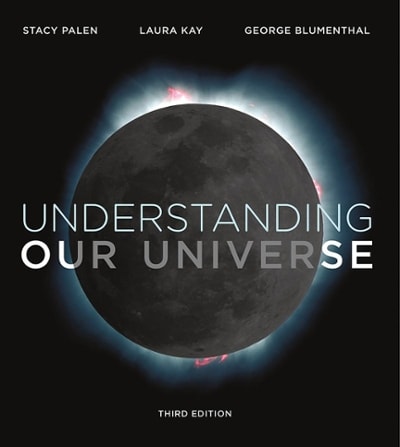Question
1) During a Lunar eclipse, light passing through the atmosphere gets refracted, so that the Moon is in a shadow for less of a distance
1) During a Lunar eclipse, light passing through the atmosphere gets refracted, so that the Moon is in a shadow for less of a distance than it otherwise would be. If one neglects to take this into account, the Earth Moon distance determined by Aristarchus's method would give an answer that is which of the below:
A)Too large
B)Too small
C) Still correct
2) It takes Jupiter 12 years to orbit the Sun. How many AU is Jupiter from the sun?
3)The Moon is about 380,000 km from Earth and takes 27 days to orbit it. How far away from Earth in km must an artificial satellite be in order to orbit the Earth once a day?
The satellite must be ____ kilometers away.
4)One way that humans determine distance is parallax. The right and left eyes are separated (the baseline of the parallax measurement) and see objects at slightly different angles (the difference being approximate twice the parallax angle). The difference depends on how far away the object is. According to Wikipedia, the angular resolution of the human eye is about 1 minute of an arc, so one could not make out a parallax angle smaller than this value. Estimate the maximum distance in meters a human could judge distances using parallax.
Step by Step Solution
There are 3 Steps involved in it
Step: 1

Get Instant Access to Expert-Tailored Solutions
See step-by-step solutions with expert insights and AI powered tools for academic success
Step: 2

Step: 3

Ace Your Homework with AI
Get the answers you need in no time with our AI-driven, step-by-step assistance
Get Started


